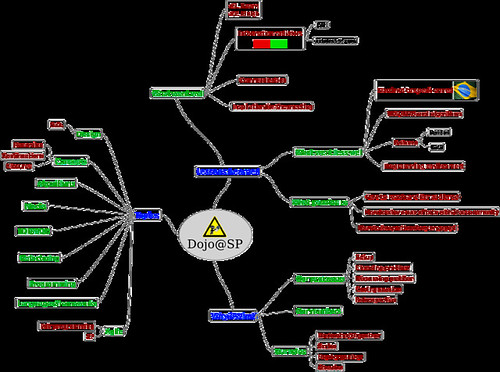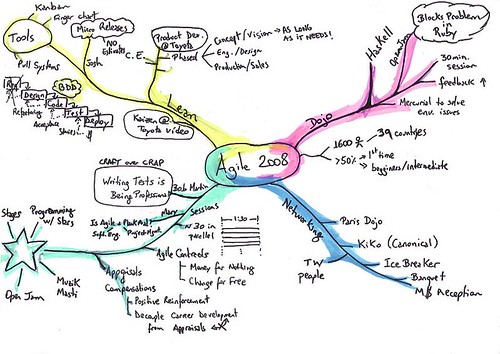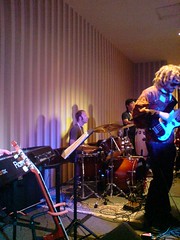August 12th, 2008Coding Dojo @ Agile 2008
The main reason I went to the conference was to present my experience report on Wednesday about running a Coding Dojo in São Paulo since last year with my friends: Hugo and Mariana. I just made the slides available for download, as well as the published paper. Feel free to comment and send questions and comments about our unanswered questions.
The overall feedback we got from the 30 minutes presentation was very good and we decided to do a Live Dojo at the Open Jam in the next available slot. Besides me, Hugo, and Mariana, Emmanuel and Arnaud from the Paris Dojo showed up, Ivan Sanchez from the Floripa Dojo as well, and other people joined us during the session.
We did a Randori session solving the Blocks Problem in Ruby/RSpec, switching pairs every 7 minutes. Although we didn’t finish the problem, it generated some interesting discussions about exposing the internal state vs. a representation of the state to the tests, and how valuable it is to introduce a data structure that you don’t need now but will soon need.
The problem generated some interest and, on the following day, Arnaud had scheduled a slot on the Opem Jam, and we decided to tackle the problem again, but this time in Haskell. Dan and Liz were also there and it was really cool to see the same problem from a different perspective. We discussed how some features of a functional language forces you to think in a different way (I still don’t quite understand Monads, by the way) :-)
Another interesting learning point was: In our paper, we discussed a whole topic about issues with people pairing in different environments (operating system, keyboard layout, shortcut keys, IDEs, …) at every meeting. At the Open Jam, Dan proposed that we used a local Mercurial repository to share the progress on development (pushing at each TDD step for the next pair to continue working on the problem). This allowed him to work on his Mac with a Dvorak layout, while we were using Emacs on a Linux laptop. The other benefit of this approach is that it allows people to experience how Continuous Integration works in practice, committing as often as possible, whenever it makes sense to do so. Good stuff!





 Twitter
Twitter LinkedIn
LinkedIn Facebook
Facebook Flickr
Flickr